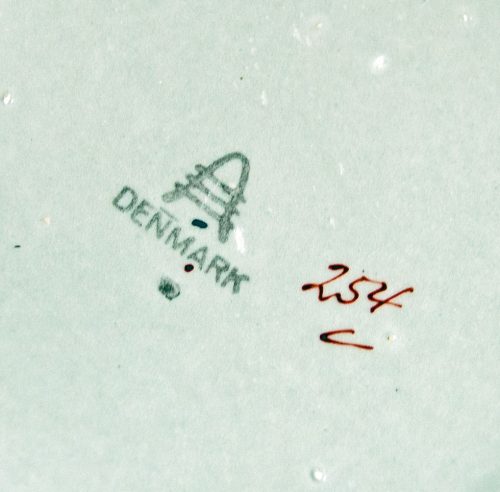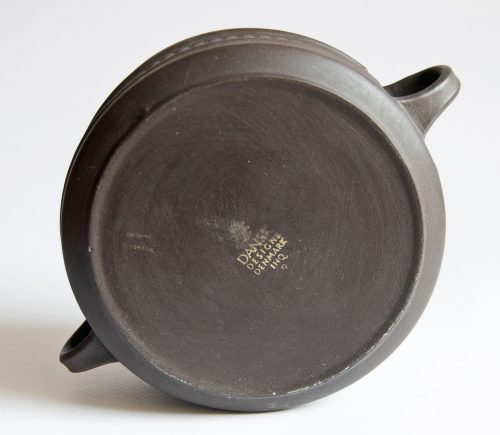Identifying Royal Copenhagen & Other Danish Makers Factory Seconds
It is important to know if you are spending a lot of money on a piece of Royal Copenhagn if it is a factory first or factory second, as often the appearance of the piece will give no indication of it being a “second” quality piece. Any pieces coming out of the Royal Copenhagen (and Aluminia) factories which did not meet the standards of perfection were market as “seconds”.
This was done by etching a very fine short line, through the 3 Royal Copenhagen lines with a diamond cuter. A second mark will usually mean that the piece is worth less depending on the rarity and popularity of the piece, as seconds were sold at a 25-30% discount .
The pieces I come across most often marked as seconds are those from the 1950s and 1960s from the Tenera and Baca series under the direction of Nils Thorsson. Some designs in these series were inconsistent in how they fired in the kiln – and if too far from the desired look, they were marked as seconds and sold in the factory outlets. In other cases pieces could be marked as seconds because of tiny firing cracks (figurines mainly) or other small faults. However sometimes there seems to be nothing at all to indicate why it is a second.
Often this marking is invisible to the naked eye unless it catches the light, so with every piece of Royal Copenhagen it is best to run a finger over the back stamp, and you will feel immediately if the piece has been marked as second quality. Sometimes the fault is visible, sometimes not.
The second marks are very hard to photograph because they are usually so fine – but you should be able to make them out in the images below:


Update 2023 – I notice that DPH trading now has an interesting article and youtube video on RC Seconds and also Employee marked Royal Copenhagen items HERE
If you are interested in what all the other marks on the backstamp of a Royal Copenhagen pieces actually mean, including how to date when they were made – then go to the official Royal Copenhagen website.
Many people do not realise that not only Royal Copenhagen marked their second quality items. Soholm Pottery on Bornholm for example also marked their second quality items – with quite strong scratched or etched lines on the base of the product. Usually the flaws on a Soholm piece are easier to detect than with Royal Copenhagen seconds. This practice doesn’t seem to have been consistently applied though – as I often come across pieces with obvious glaze flaws which aren’t marked as seconds.

Other Danish makers I have come across who marked factory or studio seconds in this manner are Palshus and Dansk Designs







